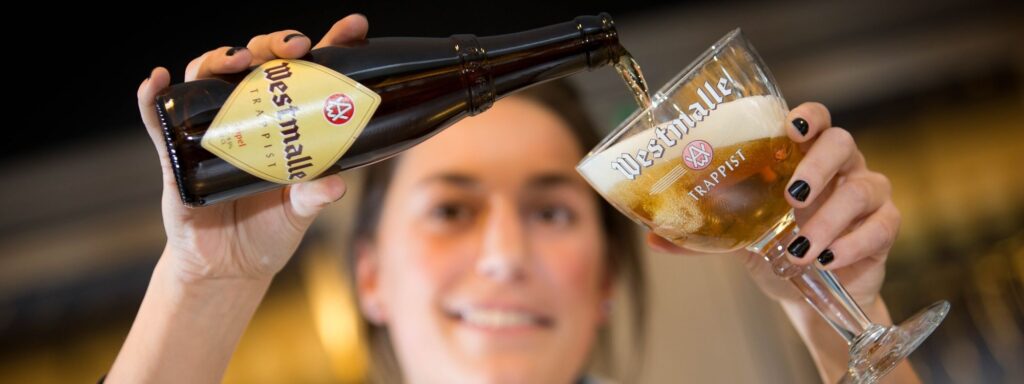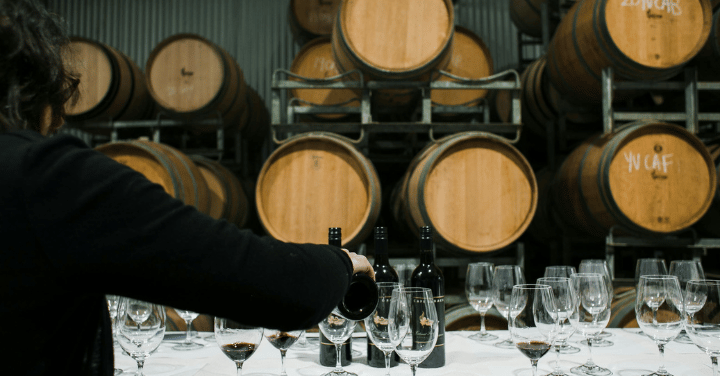Belgian Tripel beer is one of the most distinctive beers you will ever try. It has a high alcohol content and an unusual aroma, but Belgian tripels are worth the novelty. You must have heard of Belgian Tripel Beer Style so far, and just like most of us, you’ve probably wondered if Belgian Tripel is Tripel fermented or is it triple as strong as regular beer. So what’s the catch with Tripel?
What is the Belgian Tripel Style of a beer?
Belgian Tripel is actually a strong and spicy, pale Belgian ale with a firm bitterness, malty aroma, and a pretty dry finish. With its pleasant bitterness, crispiness, and freshness, it can easily trick you into drinking a few of them. That doesn’t seem too bad until you try to stand up.
It’s surprisingly drinkable considering the high alcohol content that can be even up to 9.5% ABV. History of a Belgian tripel Belgian Tripel is often associated with Trappist beers made by monks in Trappist monasteries. However, the truth is many Trappist breweries make them.
Actually, the history of the Belgian Tripel Style has some connections with the Trappist brewing.Though Trappist brewing tradition has a long history, Belgian Tripel was first brewed not too long ago.
The first modern Belgian Tripel was first made by Hendrik Verlinden at the beginning of the 20th century, in the early 1930s in Belgium, and was promoted as Trappist. Hendrik Verlinden was consulting Trappist brewery Westmalle, and thanks to that connection, he was the only non-Trappist brewer that was allowed to use this term in the promotion.
Not long after Verlinden had made the first Tripel, Westmalle monks started brewing their own Tripel.
Why is it called Tripel?
Belgian Tripel is not triple fermented. That’s not where its name comes from. The name tripel probably originated from the method of brewing used in earlier times by breweries called parti-gyle. Using parti-gyle method, a brewer could use the same mash to make beers of different strengths.
Often, brewers mashed the grains a couple of times. The first mash yielded rich, high sugar worth. Every other time the gains are mashed, the mash yielded weaker worth. Brewers often assigned letters to each style and strength of beer they made, which later became Dubbel, Tripel, Quadrupel.
The Appearance of Belgian Tripel
Belgian Tripel is usually clear, ranging from deep yellow in color to pale amber. It’s effervescent with a tick, long-lasting creamy white head.
The aroma of Belgian Tripel
“The nose” of Tripel is promising. It usually offers moderate spiciness and fruitiness on the nose. According to Beer Judge Certification Program style guidelines – “Generous spicy, peppery, sometimes clove-like phenols. Esters are often reminiscent of citrus fruit, like oranges or lemons, but may sometimes have a slight ripe banana character. A low yet distinctive spicy, floral, sometimes perfumy hop character is optional. Alcohols are soft, spicy, and low in intensity. The malt character is light, with a soft, slightly grainy-sweet, or slightly honey-like impression.”
What is the taste of Belgian Tripel?
Belgian Tripel style is specific and quite complex in its taste. Medium-bodied, highly carbonated, nicely covered alcohol content, not too heavy. Mildly spicy, with yeast-driven complexity. It’s similar to Belgian-style strong pale ales but generally darker and has more malt sweetness.
Perfectly integrated alcohol is on the higher end of the ABV spectrum but yet palatable for many beer drinkers. Sometimes you can feel banana-like fruitiness, even passionfruit, and honey-like aromas on the palate, but it’s not standard for the style. Belgian Tripel has it all – the maltiness, the bitterness, slight hoppiness, spicy flavors. It’s pleasantly effervescent and usually has a quite dry finish.
If you want to taste a tripel that is a standard for the style, don’t miss Westmalle Tripel, and our personal favorite St – Feuillien Triple.






